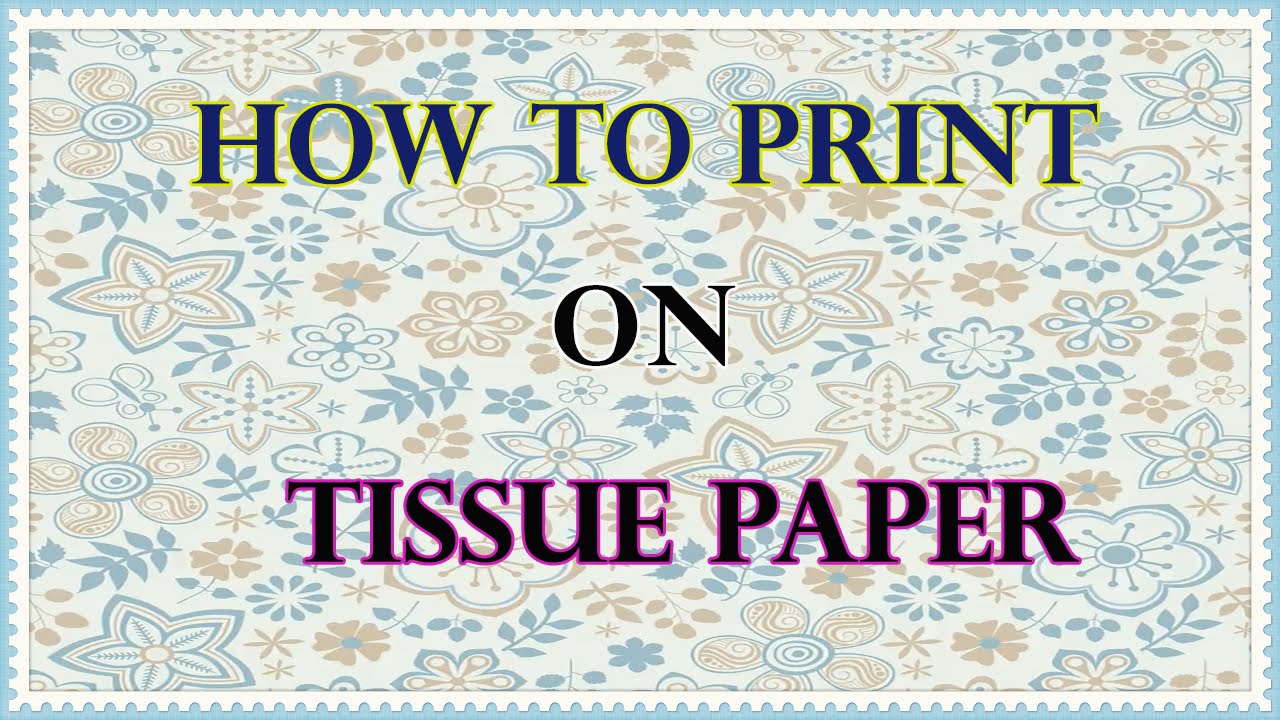Printing on tissue paper may seem like a daunting task, but with the right tools and techniques, you can achieve stunning results that are bound to impress your clients or colleagues. In this post, we’ll go over how to print on tissue paper using an inkjet printer, so you can elevate your game and add some pizzazz to your printed materials.
What You’ll Need
 Before we get started, let’s gather the necessary equipment:
Before we get started, let’s gather the necessary equipment:
- White tissue paper
- An inkjet printer
- Scissors
- Double-sided tape
- An image or design to print
Choosing the Right Tissue Paper
The first step to printing on tissue paper is selecting the right kind of paper. You’ll want to choose tissue paper that’s translucent, thin, and smooth. Avoid any tissue paper that’s too thick or rough, as it may not feed properly through your printer.
If you’re unsure about what kind of tissue paper to use, head to your local arts and crafts store and check out their selection. Many stores carry tissue paper specifically designed for use with inkjet printers, which can save you some time and hassle.
Preparing Your Design
Once you’ve selected your tissue paper, it’s time to prepare your design. You can use any image or design you like, as long as it’s the right size and file format for your printer.
To ensure that your design prints well on tissue paper, make sure it has a resolution of at least 300 dpi. If you’re not sure how to check the resolution of your image, open it in an image editing program like Photoshop or GIMP, and look for a menu option that says “Image Size” or “Canvas Size.” From there, you should be able to see the resolution of your image.
Once you’ve confirmed that your image is the right resolution and file format, you’re ready to print!
Printing on Tissue Paper
The actual process of printing on tissue paper is relatively simple, though it does require some patience and attention to detail. Follow these steps, and you’ll be printing on tissue paper like a pro in no time:
- Cut your tissue paper to the desired size. For best results, we suggest cutting your tissue paper a little larger than your final dimensions, so you have some extra room to work with.
- Place a small piece of double-sided tape on the back of your tissue paper, in the center of the sheet. This will help hold the tissue paper in place while it’s printing.
- Load your tissue paper into your printer’s manual feed tray. Make sure that the printed side of the tissue paper is facing up, and that it’s centered in the tray.
- Select the correct paper type in your printer’s settings. If you’re using tissue paper specifically designed for inkjet printers, there should be a setting in your printer’s menu for “Transparency” or “Tissue Paper.” If you’re using regular tissue paper, you may need to experiment with different paper types until you find one that works well with your printer.
- Print your image onto the tissue paper. Make sure that your printer is set to use the manual feed tray, and that you’re feeding one sheet of tissue paper at a time. Also, make sure that your printer is set to print at the highest quality possible, so your design comes out looking sharp and clear.
- Allow the ink to dry completely before handling your printed tissue paper. Depending on the humidity and temperature in your workspace, this may take anywhere from a few minutes to an hour or more.
And that’s it! With a little practice, you’ll be able to print on tissue paper quickly and confidently, and your printed materials will stand out in a sea of plain, boring paper.
Tips for Success
Here are a few tips to help you get the best results possible when printing on tissue paper:
- Experiment with different paper types until you find one that works well with your printer.
- Print one sheet of tissue paper at a time, and feed it into the manual feed tray gently and carefully to avoid any wrinkles or tears.
- Allow the ink to dry completely before handling your printed tissue paper. This will help prevent smudging or smearing.
- If you’re printing a large quantity of tissue paper, take frequent breaks to avoid overheating your printer.
- Consider using a paper trimmer or rotary cutter to achieve precise, clean cuts on your printed tissue paper.
Conclusion
Printing on tissue paper can be a great way to add some flair to your printed materials, and it’s not as difficult as you might think. Just follow the steps we’ve outlined in this post, and you’ll be printing on tissue paper like a pro in no time. And with a little creativity and experimentation, you may even discover some new uses for this versatile material.